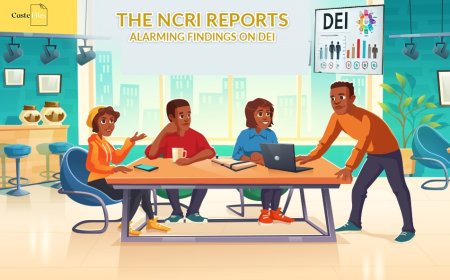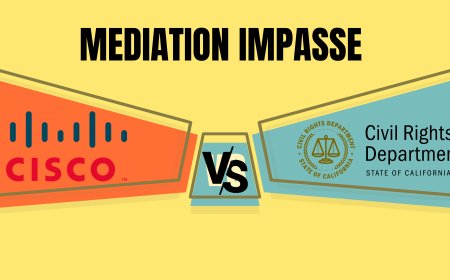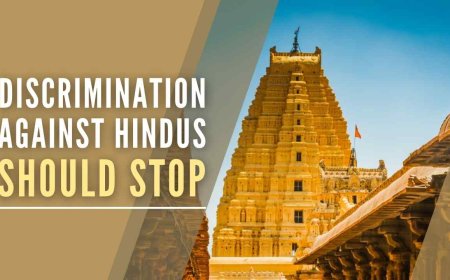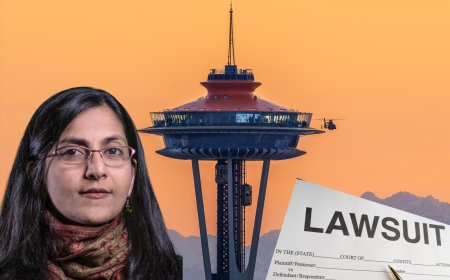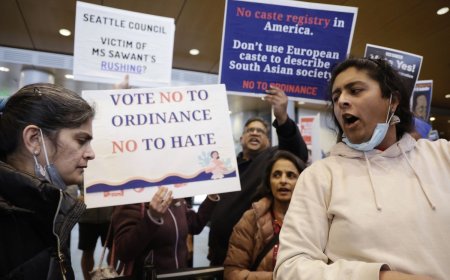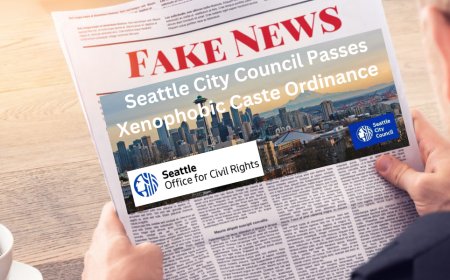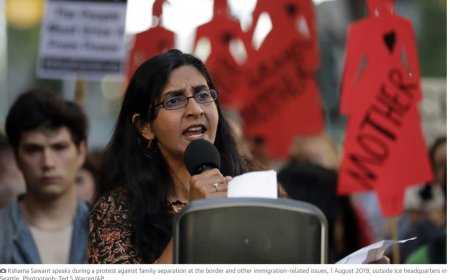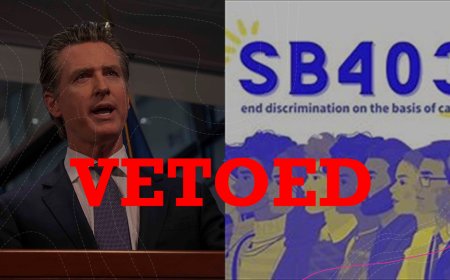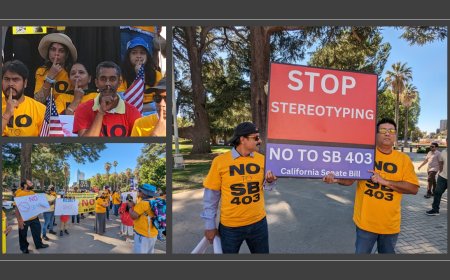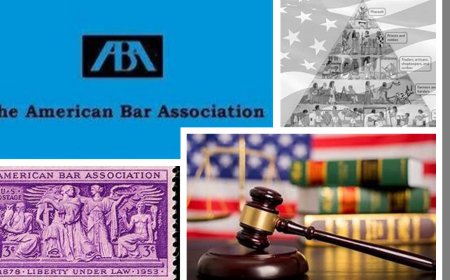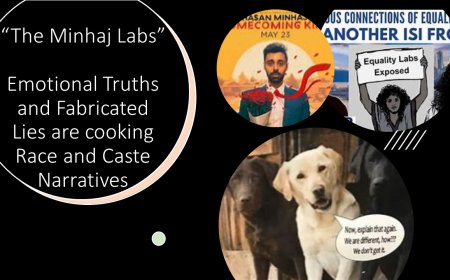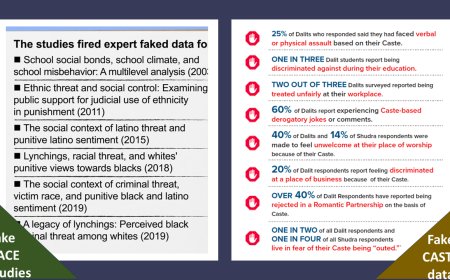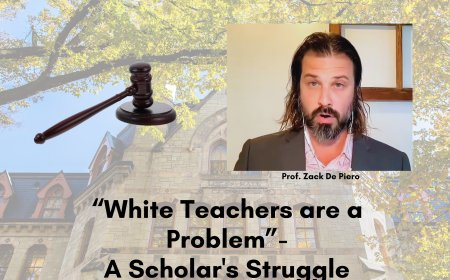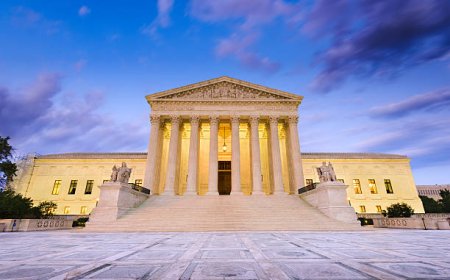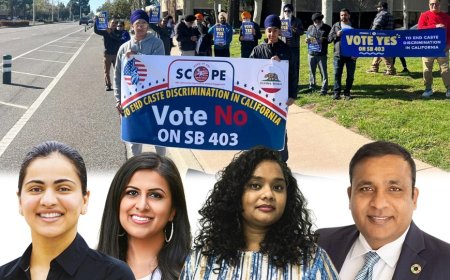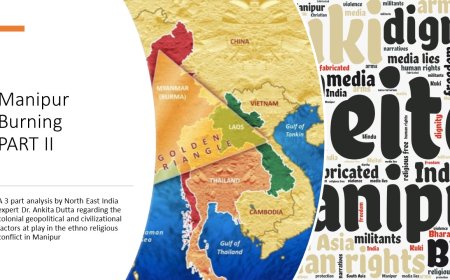Rebuttal to Kshama Sawant’s Caste FAQ
Rebutting Councilmember Sawant’s FAQ on her caste ordinance

If approved by the City Council, what would the proposed ordinance achieve?
The Civil Rights Act of 1964 guarantees protection against discrimination based on ancestry, which covers the kind of discrimination this proposed ordinance claims to address. Therefore, if approved, the proposed ordinance solves a non-existent problem.
Far from solving any existing problem, this ordinance, if passed, would harm the South Asian community by perpetuating already existing stereotypes associated with Hinduism, making all South Asians more vulnerable to hate attacks including non-Hindus. With South Asians being singled out in the proposed ordinance, businesses and institutions may start looking at this community through the lens of suspicion, possibly leading to discrimination in various settings including employment and education. The risk of lawsuits may also dissuade businesses from hiring South Asians. This means that South Asians would be discriminated against on the basis of their race, religion, and nation of origin.
Given the complexities associated with identifying someone’s caste, this ordinance creates an administrative mess for future policy makers. For instance, there is no means in the U.S. to identify individuals’ caste. Inter-caste marriages and last names associated with towns are just two nuances of the caste identification issue, which would create complexity for anyone who is charged with implementing the ordinance. There are many such complexities because there are many thousands of castes. Such an ordinance could lead to implementation chaos as well as weaponization against South Asians.
What is caste?
In short, the caste system was imposed by European colonialism to divide and conquer Indians so they couldn’t fight colonizers. This furthered the colonizers colonial ambitions leading to the looting and exploitation of the Indian subcontinent. Mass casualties resulted.
People like Councilmember Sawant are employing similar colonial tactics used to divide not just Indians but also European colonies in the Americas and beyond. This ordinance does not explicitly mention Hinduism but the very basis of the ordinance – Equality Labs’ 2018 caste survey – actually claims that caste was established in Hindu scriptures (this is a common lie), and goes on to demonize the religion of 1.3 billion Hindus worldwide. We can see that in this screenshot from the Equality Labs report:
Councilmember Sawant has been attempting to mislead her fellow Councilmembers by exploiting their ignorance on the subject of caste. The caste system did not originate in South Asia some two thousand years ago, as she claims. It came from the medieval Portuguese/Spanish idea of “blood purity”, which was used to divide and conquer the newly converted ex-Jews and ex-Muslims from “pure blooded” Christians in Europe. This system became prevalent in European thought and spread through colonization around the world to European colonies. The European colonizers used caste to categorize the mixed blood children of European men who impregnated Indigenous women and girls.
When the British took power in much of India, they deliberately mistranslated the Indigenous Indian words jati and varna to mean caste and applied their European idea of “caste” to everyone in India with new colonial laws that criminalized and stigmatized and created an extremely rigid hierarchy.
The Indigenous words jati and varna never meant “caste”. Jati means someone’s community. It could be based on clan, profession, religious sect, food practices, marriage practices, region, even gender (for transgender and queer communities). It was always fluid and different jatis moved across the social, economic, and political continuum throughout history according to circumstances.
Varna was philosophical theory. It was based on personal inclination and qualities. It was not hierarchical and was never codified into any pan-Hindu law. Hindu scriptures in many places state that all four varnas are equal. The pre-colonial written record debunks the idea of a widespread deeply entrenched rigid hierarchical Hindu “caste system”.
What does “Dalit” mean?
Dalit in Sanskrit means, "branched". This term is not an ancient term as Councilmember Sawant asserts. It was first coined in Maharashtra, India, around 200 years ago. The definition quoted by Councilmember Sawant is a fabricated one taken directly from Equality Labs' flawed caste survey. She is distorting the definition of the word to suit her narrative, and it is both provocative and insulting to Dalits.
If the caste system originated in South Asia, why are we talking about it in the United States? Is caste discrimination happening in the United States?
Councilmember Sawant uses data from Equality Labs as her primary source of evidence to prove that caste discrimination is rampant in the United States. The Equality Labs "study" was debunked by the Carnegie Endowment study. Quotes from the Carnegie Endowment study:
“[..] 5 percent of all respondents report having encountered discrimination due to their caste identity.”
“Third, caste discrimination is a surprisingly equal opportunity offense. Responses are divided neatly into thirds when it comes to who is discriminating: Indians, non-Indians, and people of both categories are almost equally to blame.
“How might non-Indians discriminate against Indians on the basis of caste if caste is not a salient category for them? This is a genuine puzzle. One possibility is that the person or persons engaged in caste discrimination could be from another South Asian country, where caste might be a meaningful marker of status and hold greater salience. Another possibility is that respondents interpret caste discrimination as a stand-in for other forms of discrimination—on the basis of skin color or country of origin, for example. Given that only 5 percent of IAAS respondents report being victims of caste discrimination, any subgroup analysis must be interpreted with due care given the small sample sizes involved.”
Other evidence of widespread caste discrimination Councilmember Sawant cites is anonymous
letters written by self-identified “Dalits”, regarding alleged caste discrimination in their workplaces. How can anyone, however, draw valid conclusions from letters that do not provide any context or verifiable evidence? Simply alleging caste discrimination without details or verifiable evidence to propose a law that would discriminate against an entire community is highly problematic.
Before Seattle legislates on caste, we need verifiable data with open-source material and real scientific methods in studies from Seattle itself, conducted by independent researchers, to make accurate assessments and provide reports.
The U.S. has thousands of temples, businesses and other organizations that have been run by the South Asian community for decades. Caste discrimination was never reported. It is striking that such reports and rhetoric should come at a time when Hinduphobia is on the rise in the US, UK, and Canada. This issue is being pushed with the might of heavy media machinery by Hinduphobic special interest groups like Equality Labs.
City Council Democrats say we need local data before the City Council can pass this ordinance?
Indeed, there is no local Seattle data. There is also no national data. Councilmember Sawant and Equality Labs keep referring to the Cisco case as evidence, yet nothing has been proven in that case yet as it is not settled. By saying that there is no shortage of data Councilmember Sawant is trying to create an illusion to force through this bill. As mentioned earlier, the Carnegie Endowment research has pointed out problems with the Equality Labs caste survey. This is what they stated:
“A 2018 survey of 1,500 South Asian Americans found that many low-caste members of numerous diaspora communities had endured firsthand experience of caste discrimination. However, the study is not based on a representative sample, raising questions about the generalizability of its findings.”
Another notable thing about Equality Labs is that Equality Labs themselves have been openly exclusionary of Hindus in their ranks. Since Hindus make up the majority of Dalits and Bahujans worldwide, this is highly problematic. Equality Labs have since scrubbed the language of this obviously exclusionary membership from their website but here is a screenshot of what their website used to proclaim:
In addition to their 2018 Survey, in 2020 Equality Labs made an appeal to their followers to fill out their survey on Caste in Tech and to add signatures to their End Caste in the US petition on Color of Change. They asked the respondents to use a US zip code if they were out of the country. This indicates that they were asking respondents to misrepresent themselves on a petition as being in the US when they were not.
Here is a screenshot from their 2020 appeal:
This is all troubling information about Equality Labs that calls into question the credibility of their information.
Rather than playing into stereotypes that are prejudiced against a minority immigrant community, it would be helpful if Councilmember Sawant could provide a list to the Hindu community of which wealthy “dominant-caste” and “right-wing” donor individuals she is referring to in her FAQ. Who is she talking about? Let her be clear so that the accused can defend themselves. If she is not talking about specific circumstances and has no evidence to back up her allegations, then she is enforcing damaging and prejudiced stereotypes against a vulnerable minority immigrant community. Precise information and evidence would help to bring clarity to the discussion so that every single South Asian would not have to be looked upon with suspicion.
Does Councilmember Sawant include “dominant caste” and “right wing” children in her list? Are South Asian children also to be demonized by her narrative? Hindu children already report school bullying in the US due to Hinduphobic stereotypes about Hindu culture and “caste” that are enforced by US school textbooks. Will those children have to pay an even greater price for Equality Labs’ debunked report and Councilmember Sawant’s vilification of an entire community? It is important for Councilmember Sawant to soberly consider the possible damage of vilifying or silencing members of the Seattle Hindu community simply because their views differ from her own. It is crucial for everyone to be able to express their opinions freely and respectfully in a democratic society.
Who is supporting this ordinance to ban caste-based discrimination in Seattle?
Two types of people or organizations are supporting Councilmember Sawant’s proposed ordinance:
1. Organizations that have anti-India and anti-Hindu agendas
2. People with good intentions who are lacking accurate or complete information
Some of the contributors to the Equality Labs survey have expressed hatred towards Hindus and India (please refer to unraveling the truth). Two in particular are Bhajan Singh Binder and Pieter Friedrich.
Bhajan Singh Binder was the subject of an undercover United States Customs Service investigation for trying to purchase C-4 plastic explosives, M-16s, AK-47s, grenade and rocket launchers, and Stinger missiles.
Pieter Friedrich is infamously known for his open call to vandalize statues of non-violence icon from India, Mahatma Gandhi, who inspired civil rights leaders including Dr. Martin Luther King.
Councilmember Sawant has boasted of support from members of the Google Alphabet Workers Union (AWU), but their discriminatory approach and slanted advocacy have been evident ever since a public hearing held by the Human Rights Commission of Santa Clara County, California, in April 2021. On that occasion, Mr. Chewy Shaw, Vice Chair of the AWU, testified as an “expert” on caste discrimination among technology workers. Mr. Shaw spoke passionately about the discrimination he claimed was rife against Dalits. However, in response to a question just a few minutes later, Mr. Shaw admitted that he had not personally met any Dalits but only “heard” stories about the discrimination against them from others. You can hear an excerpt from his comments in this video (full video).
Who is opposing the ordinance?
Anyone who is genuinely curious to know the facts is opposing this ordinance. The ordinance is opposed by Hindu Dalit and Bahujan community members and, since Hindu Dalits and Bahujans make up the majority of marginalized caste identities, they are the very people this ordinance claims to protect. Due to threats to their lives from members of the groups supporting Councilmember Sawant, these people are not showing up in large numbers in public hearings. They have been seeking to have meetings with Councilmembers but those Councilmembers have not responded to repeated requests.
Councilmember Sawant has vilified anyone opposing her point of view as “right-wing” without providing any evidence. Individual Dalits and Bahujans are representing themselves, not any organization. Councilmember Sawant has, in sweeping statements, said that those opposed to her ordinance are coming from Coalition of Hindu of North America (CoHNA) and the Hindu American Foundation (HAF) which are two Hindu organizations that she calls “right wing”.
CoHNA has worked with both Republicans and Democrats on issues facing Hindus in the U.S., as any responsible advocacy group should do when seeking to help their community. CoHNA's membership is diverse in its party affiliation and CoHNA's "agenda" is based upon concerns Hindus have in North America. The same can be said for HAF. Regardless of all this, individual Hindus who are opposing this bill are not CoHNA or HAF. They are people who have lives and concerns and voices and their lives and voices are being vilified and erased by Councilmember Sawant.
The truth is that Hindu Americans as a block vote majority Democrat, and always have. This is proven by decades of data. American conservatives have noted that Hindu Americans do not vote Republican. So how can Councilmember Sawant paint Hindu community members opposing this ordinance as “right wing”? What proof does she have other than her own prejudices? Blaming and vilifying Hindu Americans for India’s politics on the other side of the world sets a very dangerous precedent of prejudice and stigmatization of Hindu Americans and South Asians in the US.
There are individuals who identify as Dalit or oppressed-caste who oppose this ordinance. Shouldn’t we listen to them?
Councilmember Sawant has labeled Hindu Dalits and Bahujans who oppose this proposed ordinance as spokespeople for the oppressors. Speaking at the city council briefing on Monday Feb 13, she referred to Hindu Dalits as the "Candace Owens" of the community, because they were attacking the freedom and rights of their own. Her comment is anti-Black in origin and also deeply untrue. Candace Owens is considered by many a token of the Black community who speaks for the benefit of white supremacist power. She gains power and influence from accessing that white supremacist system of power. Hindu Dalits are an entire community who have no power or influence in any system of power. An entire community is not a token, especially when no one ever listens to them on their own issues.
We are beginning to see a pattern of wild accusations and big claims with no evidence in Councilmember Sawant’s FAQs. She asserts that the overwhelming majority of Dalits support this ordinance but offers no evidence to back that up and ignores community members who make up the majority of Dalits. Without legitimate scientific survey data, it is impossible to know how Seattle Dalits and Bahujans feel about the issue of caste discrimination in Seattle where this legislation is proposed. Such legitimate scientific survey data is needed to know how all US Dalits feel about the issue of caste discrimination.
Does caste have any visible markers? If not, then how will the ordinance work in practice?
No, there are no visible identity markers for any particular caste - not skin color, facial features, or any outward appearance.
In this question of how the ordinance will work, Councilmember Sawant exposes a particular fundamental flaw in her proposal (among many particular flaws). The idea of rigid, hierarchical caste – determined by one’s birth – was imposed on the Hindus by deliberately mistranslating the Indigenous words jati/varna which did not mean caste at all. Jati and varna are not determined by one’s birth and are fluid. An individual could change their jati/varna over the course of their lifetime and those identities were not hierarchical. Councilmember Sawant’s proposed ordinance seeks to enforce "caste," a rigid hierarchical system of colonizer law, on the U.S. South Asian community, particularly Hindus since Hinduism has been named by Equality Labs as the root cause of the “caste system”.
Again, this screenshot is from the Equality Labs report:
In addition to the discriminatory nature of this ordinance, its implementation is likely to result in an administrative mess. There is no way US governmental institutions can determine someone’s caste with certainty.
- How do we determine the identities of those who are born from inter-caste unions?
- What about those born from numerous generations of inter-caste unions?
- Will we need blood quantum laws to define their “caste” identity?
- Will we talk about their “blood purity” in these definitions of blood and caste?
- What if they’re half “upper caste” and half “lower caste”? What identity will take precedence according to the law?
- How will these determinations be applied legally in cases of discrimination?
- How can we assign caste based on last name (as Equality Labs has stated)?
- What do we do when the same last name can belong to different castes in different parts of South Asia?
- What about those who have legally changed their name due to marriage or some other reason?
- Will they be considered the caste of their spouse or the caste they were “born into”?
- Which partner’s caste identity will take precedence in such a scenario? Will we follow a patrilineal model where wives take on the caste of their husbands, even though many jati communities in India are traditionally matrilineal?
- What about unions that are queer and/or trans? Which spouse or partner’s caste identity will take precedence then? How will their children’s caste identity be determined?
- What about the people who changed their name for some other reason?
- How will we track their previous name?
- Will the previous name even be considered valid?
- Will they take on the caste of their new name?
- What if their new name has no caste?
- Will they be assigned a caste by the government?
- Who in the government will determine this?
- How do we keep track of all these different and varied concerns?
- Where will we contain this information pertaining to millions of people originating from all over South Asia?
- Will we need a “caste” registry in Seattle to track the thousands of jatis from South Asia?
- Who will run this registry?
- Who will decide who gets to run the registry?
- Who will determine the validity of the registry’s information?
- What will protect the privacy of the people named in the registry?
- What will prevent the contents of the registry from being weaponized against any particular community?
- What happens if the registry is weaponized against any particular community?
- Will that community have any way to hold the people running the registry accountable?
- How should we categorize people who have a town or village name for their last name? What caste will they be classified as?
- How do we verify whether or not someone is lying about their caste?
- Will we need papers from South Asian countries?
- How will we verify the validity of such papers?
- What if they don’t have papers from their country of origin?
- What if they are refugees and their papers are lost?
- What if they came to the US via a non-South Asian country and have no papers connected to South Asia?
- How do we define the caste of those who are adopted?
- Will we do blood tests and DNA sequencing to trace their ancestry?
- Many DNA tests have been debated and questioned. Who will determine the validity of such DNA tests?
- Depending on their DNA, will we legally judge that some are more likely to discriminate due to the prevalence of such and such DNA in their bodies?
- Will this not lead to dangerous racist bigoted ideas about any community, particularly Hindus?
- How do we prove someone’s caste?
- Will South Asians need to carry about identity cards or papers to prove their caste identity?
- Will they need to produce those proofs if someone accuses them of caste discrimination?
- What if they refuse to carry such papers?
- What if they forget their papers? Will they get tickets and fines or some other kind of punishment for failing to produce their “caste” papers when asked?
- What if someone doesn’t know their “caste” and therefore cannot “self-identify”, which is what Kshama Sawant says this ordinance relies on.
- What about people who don’t identify as any caste?
- What about those who refuse to self-identify?
- Will the government assign castes to such individuals with no self-identified “caste”?
- What basis of determination will the government use to define individuals’ “caste”?
- What mechanism will be in place to oversee the governmental determination of caste?
- Who gets to decide the answers to all these questions?
Are there any precedents to such an ordinance as Sawant proposes?
Councilmember Sawant mentions a handful of educational institutions that adopted the policy of banning caste discrimination on their campuses. These are places where the South Asian community at large was not aware of what was going on or ignored when they spoke up. In fact, the California State University system is facing a lawsuit brought by two of its professors who have never identified with any caste.
Councilmember Sawant fails to mention that the Human Rights Commission (HRC) of Santa Clara County, California rejected a similar ordinance.
The truth is that institutions who have heard the concerns of the Dalit and Bahujan community and who cared to question the fraudulent evidence offered by Equality Labs, have rejected the Hinduphobic agenda of Equality Labs that Councilmember Sawant is trying to make law in Seattle.
Rebutting Right-Wing Talking Points
It’s important to note that it is a common tactic of people like Councilmember Sawant and Equality Labs to label people and organizations who oppose their point of view as “right wing” This is a blatant attempt to silence people who have legitimate concerns about the possible outcomes of this legislation, and Councilmember Sawant is using this tactic to disregard facts. It must be noted that the people and organizations supporting this bill wield heavy media
influence unlike Hindu Dalits and Bahujans who oppose this ordinance. So far, despite sending out this press release on the morning of Friday Feb 17 when they finally learned when the vote would be, they have not heard back from any media to gain their perspective.
It is critical for Councilmembers and the public to hear their marginalized voices.
The “right wing” says this legislation could cause lawsuits.
The “right wing” does not say this. Logic says this. This ordinance could cause lawsuits because it fundamentally violates the Civil Rights Act of 1964 by discriminating on the basis of race, religion, and national origin. We know this because Kshama Sawant and Equality Labs have referenced Hinduism as being the religion to blame for “casteism” and have singled out people of South Asian race and origin as being the subject of this ordinance.
“Title VII of the Civil Rights Act barred race, religious, national origin and gender discrimination by employers and labor unions, and created an Equal Employment Opportunity Commission with the power to file lawsuits on behalf of aggrieved workers.”
In addition to potential lawsuits, and the complexities associated with identifying someone’s caste, this ordinance will create an administrative mess for present and future policy makers. It has the potential to create and enshrine a “caste” system of oppression in Seattle law. How many more laws will need to be passed in Seattle to uphold this one discriminatory law?
· There is no present legal means in the U.S. to identify an individual’s caste. (See points made above.)
· Inter-caste marriages and last names associated with towns are just two nuances of this caste identification issue. The complexity for anyone charged with implementing not only this ordinance but subsequent laws to make sense of this proposed ordinance is mind boggling. (See points made above.)
· There are many such complexities because there are many thousands of castes. Such an ordinance could lead to implementation chaos as well as weaponization against South Asians, particularly Hindus or anyone perceived to be Hindu. (See points made above.)
The “right wing” says that extending protections on the basis of caste is unnecessary because such protections are already covered by existing anti-discrimination policy.
The “right wing” does not say this. Seattle’s laws say this.
Seattle laws already ensure that we cannot discriminate on the basis of race, color, sex, marital status, sexual orientation, gender identity, genetic information, political ideology, age, creed, religion, ancestry, national origin, citizenship or immigration status, honorably discharged veteran or military status, an individual's actual, potential, perceived, or alleged pregnancy outcomes, or the presence of any disability.
This means that anyone facing caste discrimination would be able to use “ancestry”, “creed”, “national origin”, “gender identity”, “religion”, or any of the other relevant protected classes listed to defend themselves against discrimination. The protections do already exist.
Furthermore, there is no evidence to show that the 1964 Civil Rights Act is insufficient to provide the protections needed by South Asians.
It appears that Councilmember Sawant has invented a new phrase with the term "caste-marked". While it is popular to conflate skin color with caste, in practice it is not sensible. This has been discussed by scholars here, here, here, and here. The caste = race rhetoric seems to stem from the desire of certain western activists to apply America's racial hierarchical framework to “caste” and Hindus in India. It is flawed because there is no consistent racial or class comparison between the two nations.
The “right wing” says this ordinance is anti-Hindu.
The “right wing” does not say this. Hindus say this because it is anti-Hindu.
The Equality Labs report is the basis for which Councilmember Sawant’s legislation exists, and on page 9 of that report it is asserted that caste is related to Hindu Dharma. This is a screenshot from that page 9:

This ordinance is also being put to a rapid vote during the Hindu sacred time of Mahashivratri. Seattle Hindus only found out for sure that the vote was on Tues Feb 21 on the morning of Friday Feb 17 because that was when the City Council meeting agenda was finally posted. When they had previously called City Councilmember offices, they were told each time that the ordinance still had to go through committee and there was no posted date for the vote. But this ordinance didn’t go through committee. It was sent straight to a full city council vote. Hindus were overwhelmed by this attack on their community during the sacred time of Mahashivratri when Hindus were fasting all day and staying awake in ceremony all night. How could they rally the Hindu community while everyone was in ceremony? How could they get time off work on such short notice to attend the vote?
Councilmember Sawant is essentially asserting that Hindus are objecting to the legislation because Hindus want to practice caste - as if it is an essential part of Hindu traditions and customs. In her FAQ, she has compared Hindus opposing her ordinance to homophobic Christians who say that their anti-LGBTQ stance is an essential aspect of their faith. Hindus and Hinduism has nothing in common with homophobic Christians. It was Christians who imposed and enforced homophobic and transphobic laws in India during colonizer rule to stigmatize and criminalize Hindu queer and trans communities. Hindus have since ancient times included the queer and trans community and Hindu scriptures speak of that community under the umbrella term “tritiya prakriti” which means “3rd nature”. Tritiya prakriti people were respected and employed in many fields in India. They were seen as advisors and spiritual guides. The fact that Kshama Sawant vilifies Hindus by comparing them to homophobic Christians is yet another example of anti-Hindu rhetoric designed to increase hatred and prejudice towards Hindus. It also increases the hate and violence Hindu queer and trans community members suffer around the world.
It was Christians who imposed a colonizer caste system upon India with colonial laws that created a rigid inescapable hierarchy. The idea that Hindus would want that system, or ever defend it, is untrue, deeply offensive, and erases our history of centuries of colonial trauma.
Councilmember Sawant is conflating the colonizer’s oppressive caste system with Hinduism, portraying “caste” as an inextricable part of Hinduism and ignoring the historical origins of caste in Europe as well as the British Raj's imposition of a caste hierarchy on Indians.
THERE IS NOTHING ABOUT THE EUROPEAN CONCEPT OF CASTE THAT IS ESSENTIAL TO OR FOUND IN HINDU CULTURES, RITUALS OR CUSTOMS.
Reminder:
“Caste” came from the medieval Portuguese/Spanish idea of “blood purity” used to divide the newly converted ex-Jews and ex-Muslims from the “pure blooded” Christians in Europe.
· This system became prevalent in European thought and spread to their colonies where they used it to categorize the mixed blood children of European men who had impregnated Indigenous women and girls.
· During this time, Europeans began colonizing much of the planet and enforcing their ideologies and social systems on Indigenous populations.
· Upon seizing power in India, the British set about applying their European idea of “caste” to everyone in India and deliberately mistranslated the Indigenous Indian words jati/varna as caste to blame this oppressive system on Hindus.
· The new British colonial laws criminalized, stigmatized, and created an extremely rigid hierarchy that never used to exist in pre-colonial India.
· The pre-colonial written record debunks any idea of a widespread rigid and ancient caste hierarchy stemming from Hindu culture all over the Indian subcontinent.
The “right wing” says that it would disproportionately target Indian Americans.
The “right wing” doesn’t say this. Indian Americans say this because it is a fact.
India is the only nation and Hindus are the only religion that the average American associates with caste due to prevailing anti-Indian and anti-Hindu rhetoric. It is simple logic, therefore, that this legislation will be used against Indians and Hindus, or anyone perceived to be Indian and Hindu which might be anyone who looks or identifies as South Asian.
The fact is that Equality Labs’ caste report targets Indian Americans while claiming to represent them. Indian Americans are literally the subject of the report. Moreover, in Equality Labs’ zeal to achieve their desired data outcome, they applied questionable research methodology that may mean that Indian and Hindu American Dalit and Bahujan voices were ignored.
The “right wing” says that such protections are going to create divisions where they simply do not exist.
The “right wing” doesn’t say this. Indian colonial trauma says this.
The whole point of the colonizer’s caste system was to divide and conquer Indian communities so they couldn’t unite to fight back against the colonizers who were looting and slaughtering them. What Sawant’s ordinance will do is create an environment of suspicion, stigmatization, and punitive behavior among South Asians. This is exactly what the British did in India.
In addition, it will be more likely that South Asians will be viewed with suspicion by corporations and other businesses as well as universities in Seattle, to such an extent that South Asians may start losing out on opportunities for employment or promotion. It is easy to envision scenarios in which South Asians could lose out on advancement opportunities that would put them in management positions whether in corporations, in teaching institutions, in government, and more. South Asians who participate in the political process, the legal profession, or advocacy work could have the caste issue weaponized against them to discredit their voice and labor.
Finally, it could cause new generations of South Asians to look down upon – and reject – their heritage and lineages. This is already happening in public schools because of the anti-Hindu colonizer narrative taught there. The loss of identity and heritage is a particular pain understood by many people. When that pain comes from an enforced sense of shame in one’s own identity, it is even more tragic.



